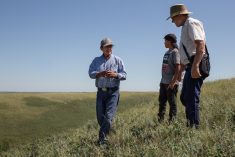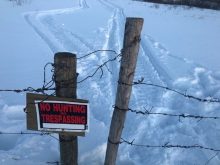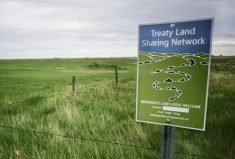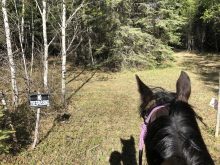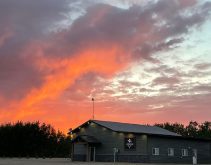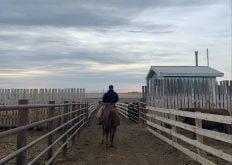This is the third story in a multi-part series. Read the first and second stories here.
One of the most infuriating groups of trespassers are the people who travel with wire cutters.
It’s something Judy Wilkinson and I chat about before our on-the-record interview. Part of me is always astounded by the nerve of it, and the pre-meditation.
Read Also
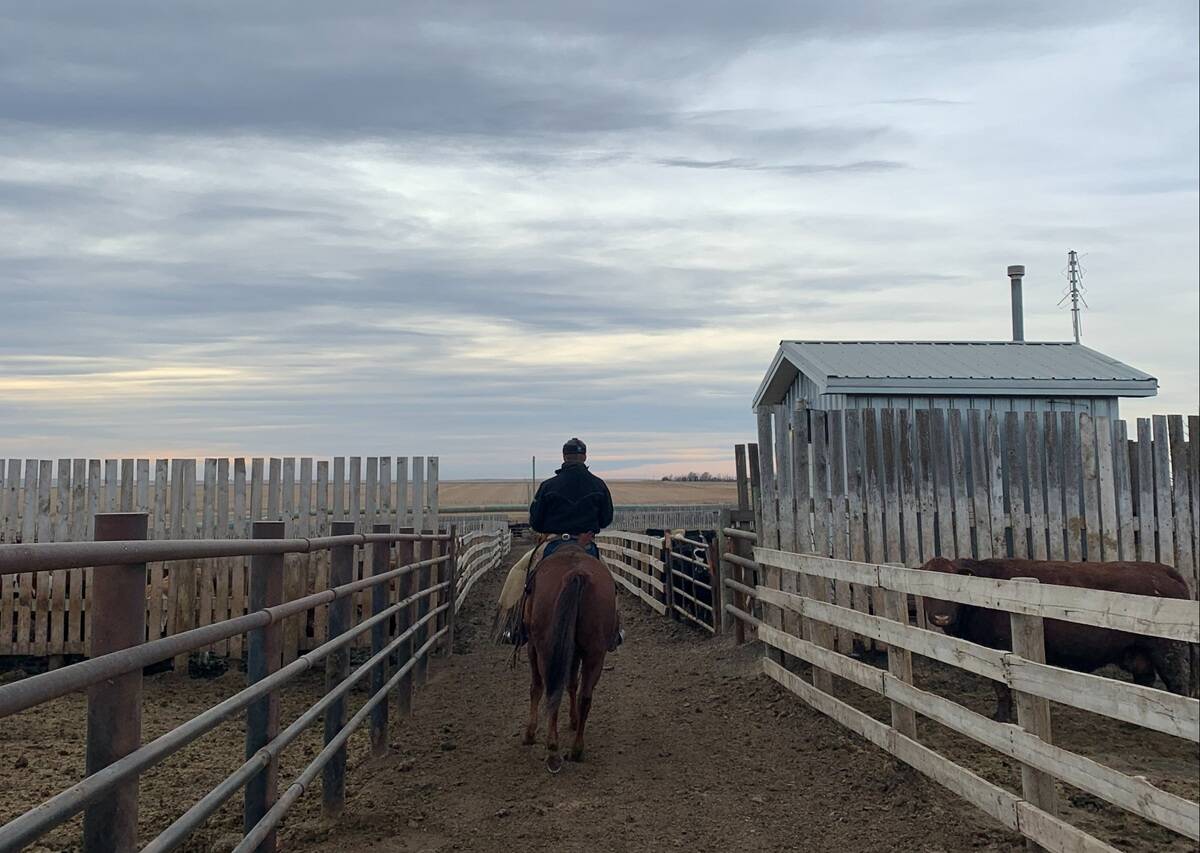
Pen riders still better than tech at detecting respiratory disease in feedlot cattle, says researcher
Recent research found that pen riders are better than tech at flagging signs of BRD in feedlot cattle
Judy and her husband Kevin, who raise livestock on the northwest side of Turtle Lake, have their own experience with cut fences. If their animals got out, it would be a real problem. For one thing, their operation borders a few other communities, including a small section of Thunderchild First Nation known as the “hay reserve” (separate from the larger portion of the reserve to the south), plus the lake communities. They’re also near the Divide Forest, from which it would be nearly impossible to round up loose livestock.
The other thing is they’re not raising cattle or sheep. They’re raising bison.
Bison can be dangerous. They are much more athletic and powerful than cattle. They will defend their calves against perceived threats aggressively. Not too long ago, they regularly had to fend off all kinds of predators, including wolves and plains grizzly bears. I, personally, would much rather run into a black bear or any other type of wildlife in our area, than a bison.
So you can imagine the feelings provoked a couple of winters back when Kevin discovered that snowmobilers had cut the perimeter page-wire fence of one of their bison pastures. Fortunately, the bison weren’t in that pasture at the time, but it could have been a disaster.
The Wilkinsons are far from alone in their aggravation. Jay and Wanda Millard grow crops and raise cattle. Their farmyard is just southeast of Turtle Lake, but they have land edging the lake, and their pasture also includes the west side of Stony Lake, a large wetland that occasionally attracts people.
The Millards’ trespassing stories range from annoying but mostly harmless to those that end with damaged crops.







They have their share of illegal hunting stories, too. They’ve seen unknown hunters in their field, too close for comfort to Jay’s parents’ and aunt and uncle’s homes. Another time, a local outfitter was caught cutting fences on the Millards’ leased pasture, Jay tells me.
It’s important to acknowledge that it’s not just one group of people causing all the problems, and every group has its share of troublemakers. I have dug through garbage dumped on public land or road allowances, and found the names of locals, so I know it’s not just “lake people.”
But as more people come to the area, often attracted by the lakes and other recreation, the trespassing issues grow.
Kevin and Judy have farmed at Turtle Lake for over 40 years. They’ve noticed more recreational traffic, especially in the winter, as more people visit or live at the lake year-round. People spill out onto the surrounding farm and ranchland, and into the Divide Forest. It’s not unusual to see groups of 15 to 20 people on quads heading to the Divide Forest, Kevin says. And it’s a different crowd now at Turtle Lake than 15 years ago — fewer locals or people with deep roots in the area — and that’s changed the dynamic, especially among those ATVing, he adds.
Kevin and Judy haven’t been plagued by trespassing issues constantly over the decades, but there have been problems, such as people stealing, vandalizing and dumping garbage.
A legislative solution
On the face of it, Saskatchewan’s new trespassing legislation seems to promise an effective legal solution to the trespassing issues landowners have been wrestling with for years. It seems simple, even common-sense — ask permission before you step onto someone’s land, whether or not it’s posted. Previously, land had to be posted with no-trespassing signs for even a miniscule hope of legal action. It’s the kind of change the province’s farming and ranching communities have been pleading for, and that the Saskatchewan Association of Rural Municipalities supports as well.
The new legislation, which was proclaimed earlier this year, shifts the onus to the person accessing land to prove they have permission to be there. Rather than making landowners post no-trespassing signs on their property, those wanting land access will have to contact the owner or occupier of the land. Consent can be given orally, in writing or electronically. Landowners can also post signs indicating specific activities are allowed on that land. The person accessing the property needs to prove they had permission to access the property, “on a balance of probabilities.”
The Trespass to Property Act covers lawns, gardens, yardsites, land under cultivation, grazing land and enclosed land. It also requires people to gain permission before accessing leased agricultural land. Those convicted under the act can face fines of up to $5,000.
There are several people exempt from asking permission under the act, such as firefighters, peace officers, paramedics and other emergency workers; people reading metres or doing other work related to public utilities; gas or electrical inspectors; and “individuals engaged in lawful hunting, fishing or trapping activities.”
The act also states that an “occupier” (ex. a landowner, renter or manager) owes “no duty of care” to those entering land without permission, as long as they’re not intentionally creating a danger or doing a “wilful (sic) act with reckless disregard of the presence of the person.” To me, this suggests that if, for example, someone trespasses in a bison pasture and is hurt by a bison, the farmer won’t be held responsible. But if a farmer or rancher intentionally booby-traps their land with upside-down harrows to harm trespassers, they would be open to criminal charges or lawsuits. However, I’m a writer, not a lawyer, so take that assessment with a little salt.
A little respect
Wanda and Jay Millard are hopeful that the consequences of being caught trespassing under the new legislation will deter people. They’re tired of snowmobilers ignoring no-trespassing signs and winter-killing newly seeded grass, hunters leaving gates open (an annual occurrence) and all the other trespassing problems they’ve faced.
“We’re not allowed to go into anyone else’s backyard and have a party, cut fences. It’s time for a little respect. And I think hopefully the new law brings that,” says Jay.
Kevin and Judy Wilkinson have mixed views on how effective the new legislation will be. Kevin thinks that if someone is caught trespassing or damaging property, “then the law has more teeth, maybe, to come down on them.”
But the Wilkinsons both think there needs to be more education and communication around trespassing and the new legislation.
“I don’t think people are even going to realize it,” says Judy of the new legislation. In the winter, you can see snowmobile trails in the unfenced fields along the highway between Livelong and Turtle Lake, she points out.
“And you know it’s not the landowners that are cruising on their fields. So I don’t think people even know it.”
Maybe the village offices at the lakes should bring up the new trespassing legislation at their meetings, she says, to raise awareness. Maybe the rural municipalities (which overarch some of the lake villages as well as the ag and acreage land) could do the same. But even communication and education will only go so far.
“You can’t stop people from doing things that they’re going to do. You know, you just can’t. What are you going to do?” she says, outlining a confrontation she had with people on ATVs in another farmer’s field.
There’s also the question of whether the new legislation can be enforced. Helmets make it hard to identify people on snowmobiles and ATVs, and even if they have license plates, they may be hard to catch on trail cams. Besides, someone on a snowmobile can easily evade other vehicles, and even ATVs have an advantage over rough terrain.
Unfortunately, various other crimes keep the RCMP officers we do have busy. Our area is about an hour and half or so from both Lloydminster and North Battleford, two small cities on the Yellowhead Highway that frequently top Maclean’s annual violent crime lists. Neither of those communities can be boiled down to a bunch of crime stats (and I personally feel quite safe visiting both cities), but I don’t think there’s any denying that we’re dealing with a lot of crime and related social issues.
Does the threat of arrest deter people from breaking the rules? I ask Phil whether he was more careful about confronting trespassers after his arrest. Since then, he’s sold his property and moved on, but he did deal with people trespassing after that earlier confrontation. He tells me that in some ways, he was even more aggressive about booting sledders off his property, albeit without a firearm in hand. One couple he kicked off his land was just out “putzing around,” and probably not “spooking up the wildlife.” Phil later felt bad about aggressively confronting them, but he’d had enough. He also had another ugly confrontation with another sledder.
Still, Phil doesn’t feel overly optimistic about the new legislation, and sees problems down the road with it.
“I hope it’s effective to keep these guys out, but yet, in another way, it’s going to cause problems because of the whole (treaty) hunting rights thing, you know. There’s a lot of landowners that would be glad to actually see people hunting because of too many deer around or too much of this around. But now, with the zero tolerance for trespassing, I mean…”
He trails off, and I ask him if he sees any solutions. Phil says he doesn’t know what the answer is.
“I can see down the road somebody getting hurt, somewhere. Especially these days with farming being as stressful as it is. I mean, some guy gets his fence cut or something, and somebody’s just going to come unglued.”
For the next installments, see:




